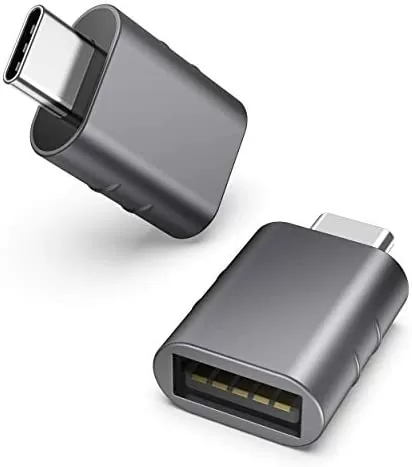How does a USB-C to USB 2.0 to USB adapter work?


USB-C is a versatile and widely used connector that has revolutionized the way we connect and transfer data between devices. However, not all devices are equipped with USB-C ports, which can be a problem when you need to connect them to a USB-C device. This is where a USB-C to USB 2.0 to USB adapter comes in handy. In this article, we will explore how this adapter works and how it enables compatibility between different types of USB ports.
Understanding USB-C and USB 2.0
Before diving into the details of how a USB-C to USB 2.0 to USB adapter works, let’s first understand what USB-C and USB 2.0 are.
USB-C, also known as USB Type-C, is a relatively new standard for USB connectors. It is smaller and more versatile than its predecessors, such as USB-A and USB-B. USB-C ports are reversible, meaning you can plug the connector in either way, eliminating the frustration of trying to figure out the correct orientation.
On the other hand, USB 2.0 is an older version of the USB standard that has been widely used for many years. It offers a maximum data transfer rate of 480 Mbps (megabits per second) and is compatible with USB 1.1 devices.
How does a USB-C to USB 2.0 to USB adapter work?
A USB-C to USB 2.0 to USB adapter is a small device that allows you to connect a USB-C device to a USB 2.0 device using a USB-C cable. It acts as a bridge between the two different types of USB ports, enabling data transfer and power delivery.
Here is a step-by-step explanation of how the adapter works:
1. The USB-C end of the adapter is plugged into the USB-C port of the device you want to connect to a USB 2.0 device.
2. The USB 2.0 end of the adapter is plugged into the USB 2.0 device, such as a computer or a USB hub.
3. Once the adapter is connected, the USB-C device and the USB 2.0 device can communicate with each other.
4. When you transfer data from the USB-C device to the USB 2.0 device, the adapter converts the USB-C signals into USB 2.0 signals, ensuring compatibility between the two devices.
5. Similarly, when you transfer data from the USB 2.0 device to the USB-C device, the adapter converts the USB 2.0 signals into USB-C signals.
6. The adapter also allows for power delivery from the USB 2.0 device to the USB-C device, enabling charging or powering the USB-C device.
Benefits and limitations of a USB-C to USB 2.0 to USB adapter
Using a USB-C to USB 2.0 to USB adapter offers several benefits, including:
– Compatibility: The adapter allows you to connect USB-C devices to USB 2.0 devices, expanding the range of devices you can connect and use together.
– Convenience: Instead of purchasing new cables or devices with matching ports, you can simply use the adapter to connect your existing USB-C and USB 2.0 devices.
– Cost-effective: Adapters are generally more affordable than buying new cables or devices, making them a cost-effective solution for connecting different types of USB ports.
However, it is important to note that a USB-C to USB 2.0 to USB adapter has its limitations:
– Data transfer speed: While USB 2.0 offers decent data transfer speeds, it is slower compared to newer USB standards like USB 3.0 or USB 3.1. If you need faster data transfer speeds, you may need to consider other options.
– Power delivery: USB 2.0 has limited power delivery capabilities compared to USB-C. If you are connecting a power-hungry USB-C device to a USB 2.0 port, the power delivery may be insufficient, resulting in slower charging or limited functionality.
In conclusion
A USB-C to USB 2.0 to USB adapter is a useful tool that allows you to connect USB-C devices to USB 2.0 devices. It works by converting the USB-C signals into USB 2.0 signals and vice versa, enabling data transfer and power delivery between the two devices. While it offers compatibility and convenience, it is important to consider the limitations of USB 2.0 in terms of data transfer speed and power delivery. Overall, a USB-C to USB 2.0 to USB adapter is a cost-effective solution for connecting different types of USB ports and expanding the functionality of your devices.
Recent Posts
How do I create an engaging and informative online quiz or assessment?
Creating an engaging and informative online quiz or assessment can be a powerful tool for… Read More
What are the most effective methods for managing and reducing work-related stress in the hospitality industry?
Work-related stress is a common issue in the hospitality industry, where employees often face long… Read More
How can I improve my assertiveness and communication skills in a leadership position?
In a leadership position, assertiveness and effective communication skills are crucial for success. Being able… Read More
What are the key elements of a successful employee recognition and rewards program?
Employee recognition and rewards programs play a crucial role in motivating and engaging employees, as… Read More
How do I effectively manage and respond to customer feedback and reviews?
Customer feedback and online reviews play a crucial role in shaping a company's reputation and… Read More
What are the best strategies for effective time management as a stay-at-home parent?
Effective time management is crucial for stay-at-home parents who juggle multiple responsibilities on a daily… Read More